BA PEOPLE • February 2023
Day in the life: our Master of Wine
More people have been to space than have qualified as a Master of Wine. Only around ten per cent of candidates pass all three sets of exams, so it’s safe to say the 415 Masters of Wine in the world today are here for the right Riesling. Our very own vino expert and Master of Wine, Tim Jackson, oversees all things vinous and every bottle we serve...
One of the first things that Tim has introduced is a new ‘destinations’ programme. Starting this year, if you travel long-haul in First and Club World, you can savour a quarterly-changing selection of reds and whites from one of the destinations we fly to and learn about the region.
How did your passion for wine start?
In the summer of 1994, between my first and second years at university, my dad and I took a road trip around France. We visited Chablis, where we enjoyed the local whites. From there, we went onto Dijon and the heart of Burgundy, before heading down the Loire Valley, up to Normandy and home. We went to Bordeaux the next year and the Rhône Valley after that. I got hooked.
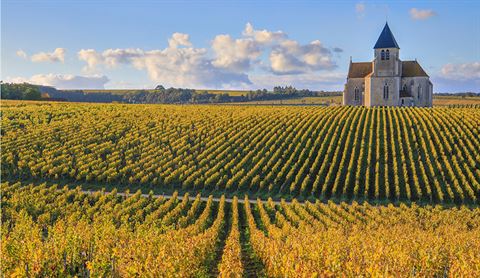
A vineyard and church in the Chablis region of Burgundy, France
When and how did you become a Master of Wine?
I passed the three components of the Master of Wine qualification in 2017. The whole process took me four years. There are the two written exams – which investigate everything from grape growing and winemaking to commercial and contemporary issues – and the fearsome practical wine tasting exams, where you blind taste a total of 36 red, white, sparkling, rosé, fortified and sweet wines. I also completed a 10,000-word thesis.
Difference between your role and a sommelier’s?
The role of a sommelier is specific, with a focus on wine service to consumers in the ‘on trade’ – restaurants, bars and so on. A sommelier’s skills centre on not only building a wine list suitable for their establishment, but also techniques for presenting and explaining wines to customers at the table, as well as pouring and other at-table services.
The Master of Wine qualification has its origins more heavily in the wine trade, with a focus in the production, distribution, retail, selection and communications arena (though there are MWs with sommelier backgrounds).
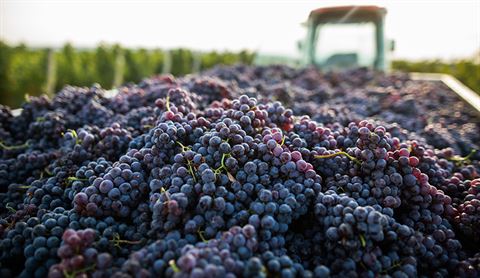
Developments or trends in the industry to watch for?
Over the last five or so years, there’s been a move away from ‘big’ wines (particularly reds). That is, reversing some of the previous decades’ shift to riper, higher alcohol, more tannic and more heavily oaked wines. In some cases, this ‘bigger is better’ shift went too far, yielding wines that were actually quite hard to drink and enjoy. Winemakers are dialling back some of these elements to find a better balance between rich, flavoursome wines and those with lightness, freshness and drinkability.
Best part of working with British Airways?
Turning my hobby into my job. I get a buzz from doing something I’m passionate about and choosing wines that will go on to tantalise the tastebuds of, literally, millions of our customers. That’s a huge responsibility, but it gets me out of bed every day. And I get to travel a bit as well.
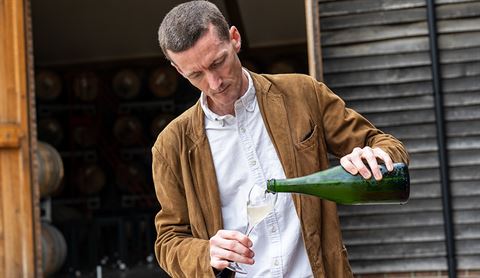
The Master at work
How do you choose the wines for our flights?
This varies based on the cabin and the type of wine or theme. In general, once I’ve identified the type and estimated quantity, I’ll specify styles that will fit. Working closely with my buying team, we’ll invite producers to tender. I’ll shortlist and we’ll taste those wines blind, assessing them not only for their objective quality, but also for their likely suitability for serving at altitude.
The drier cabin conditions reduce our perception of aromas, while textures – especially the bitter, mouth-drying effects of tannins in red wines – become more evident. So we also consider whether a wine has enough fruit intensity at ground level to still taste good at altitude, and whether its texture is likely to work up in the air.
One wine you’re particularly excited for jetsetters to try this quarter?
For those flying in First, the Mullineux 2020 Syrah from the Swartland in South Africa, made by Andrea and Chris Mullineux, who won the 2022 Winery of the Year in the local Platter’s Guide.
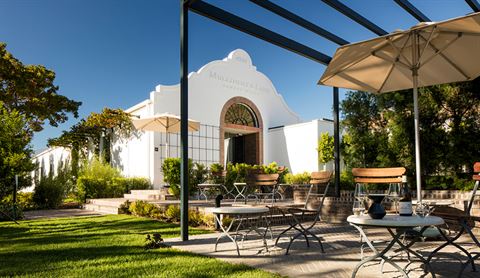
Mullineux, winner of the 2022 Winery of the Year in the local Platter’s Guide
Tips to enjoy a glass fully?
Don’t have a full glass! Seriously, much of the pleasure in a glass of wine is in the aroma. To get the most out of that, have a decent-sized glass with a tapered top (like a tulip shape), as this helps to trap the aroma, but then only fill around a third of the glass so there’s space for the aroma to ‘collect’.
Secondly, don’t over-chill white wines. If you serve at fridge temperature (5°C), the aromas will tend to be suppressed, so you’ll get less from them. Take the bottle out of the fridge a little bit beforehand, so they’re warmer (8-12°C, depending on the wine).
Finest wine memory from your travels?
I have a lot of great memories to choose from, such as a dawn tasting of Riesling wines from the back of a ‘ute’ in the Pewsey Vale vineyard, Australia, or tasting Madeira wines dating back to 1875. A highlight was visiting Ridge’s iconic winery in the Santa Cruz Mountains, south of San Francisco, and tasting the 1965, 1975, 1985, 1995, 2005 and 2015 vintages of Monte Bello. Those days don’t come around too often.
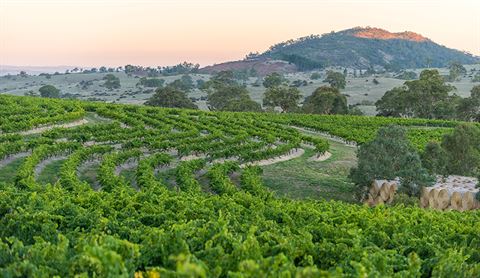
Pewsey Vale vineyard in Eden Valley, South Australia
An underrated region for wine?
A number of places have their great wines overlooked, because they have reputations for making cheap wines – Chile, South Africa and Portugal have all suffered from that to some degree.
The country that probably gets the most overlooked is Greece. The place to change that perspective has to be Santorini. A stunning tourist spot, it’s essentially the remains of a volcano that erupted around 3,600 years ago. The white wines are equally as stunning, mainly made from the Assyrtiko grape variety that’s native to the island. From vines whose roots can be centuries old, these are often unoaked, steely, minerally, intense wines with excellent longevity and personality. World class.
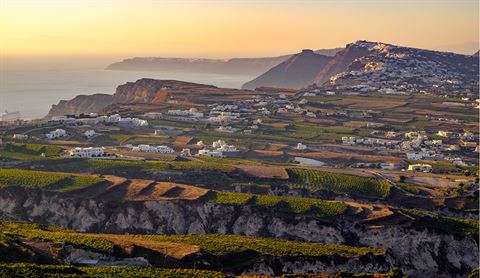
Santorini is famous for exceptional wine
Top destinations for wine during spring?
Europe’s wine regions, as the vineyards come back to life. That said, days can still be on the cool side, so I’d go a bit further south. Porto is a great city. Of course, the port wine lodges are there, but it’s also easy to get to the vineyards of the Douro, an hour or two’s drive inland. These terraced vineyards that contour around the winding, steep-sided valleys of the Douro River are a UNESCO World Heritage Site, and there are plenty of quintas (farms) that you can visit and taste at.
Best place for a glass in London?
67 Pall Mall, a private members’ club founded in 2015, is an oasis for wine lovers. With hundreds of wines by the glass, frequent tastings and masterclasses by wineries and winemakers, and excellent food to match, it’s a must. If you can’t get in, you can always hunt down Planet of the Grapes or its pub, Fox Fine Wines. You can also add Blandford Comptoir and Noble Rot…
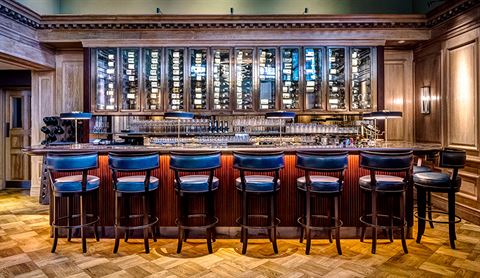
Private members' club 67 Pall Mall, London
Favourite red?
Châteauneuf-du-Pape, from the Rhône Valley in Provence, Southern France. Near the historic city of Avignon (once the seat of the papacy), the wines of Châteauneuf are rich, spicy and warming.
Favourite white?
Having started my wine journey in Burgundy, it’s perhaps not a surprise that white Burgundy, especially from the village of Puligny-Montrachet, is my ultimate favourite.
Next best thing to wine?
Whisky, especially single malt Scotch. I also really like US rye styles. With different grains (barley, corn, wheat, rye etc.), distilleries and barrels for maturation, there’s a wide range of flavour expressions that whisky can have. That makes it almost as fascinating as wine… almost.
This article has been tagged BA, Travel Tips
More from previous issues

Five inspirational women in aviation (who you’ve probably never heard of)
The Club’s new flashback history series kicks off with these impressive pioneering women of British Airways
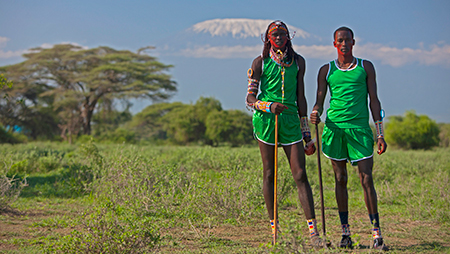
The ultimate alcohol-free adventures for Dry January
From jogging through the African bush with Maasai warriors to farm-fresh feasts in Brazil’s cloud forests, here are five unforgettable holidays best enjoyed sober
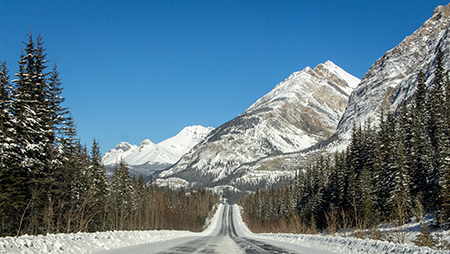
Five epic drives for fitness bunnies
A road trip doesn’t just mean hours in the driver’s seat. These journeys take in everything from hiking to cycling and surfing

My Club: the food vlogger
Travel and food influencer and BBC Creator in Residence Shu Shi Lin on the best places to celebrate the Lunar New Year